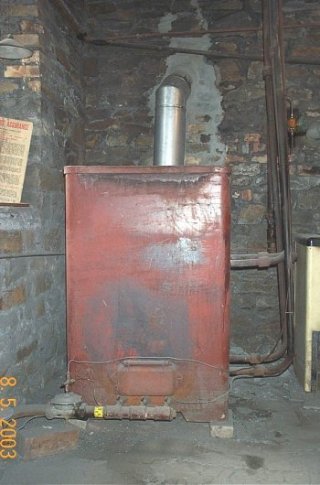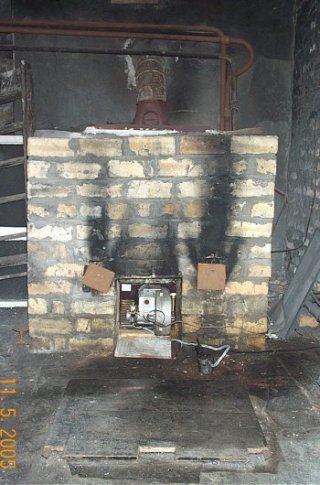THE PERKINS HPHW HEATING SYSTEM
IN SOUTH WALES
It was most surprising to discover that in the numerous Churches and Chapels which were built in South Wales during the second half of the 1800’s a great many were heated by the Perkins pressurised system. Most of these systems are still operating as originally installed using gravity circulation to distribute the water around the endless loop of pipework.
Both the high pressure type of system using expansion pipes and the medium pressure type using a cold water feed tank with an integral relief valve, have been found installed in these church / chapel buildings.
The population in the Welsh valleys increased dramatically from the 1840’s onwards. Demographic changes were brought about by the influx of people wanting to work in the new industries of coalmines and steel works that were being opened. At the same time as this growth in population was occurring ecclesiastical buildings to suit all religious denominations were being constructed.
Various researches carried out so far have been unable to identify names of the original firms who installed these Perkins heating systems during the 1800’s. Only one instance has recently been found of an original installer. That was Musgrave's of Belfast c.1890 at All Saint's Church in Llanelli, Carmarthenshire.
We do know that these firms bought the hydraulic quality tubing and fittings that were required, and then designed each heating system deciding upon the number of heating circuits that were needed to form the endless loop, which had to satisfy the heat loss of the building. They fabricated and shaped the tubing to suit the layout for each section of the circuit, so that the pipework could then be assembled in situ including the proportion of each circuit that had to be fitted inside the brickwork or iron furnace. As a rough design rule of thumb 1 foot of furnace tube gave out 1000 Btu's / hour.
By the early decades of the 20th century many of the original brickwork furnaces and iron furnaces were in need of renewal and this refurbishment work was carried out by local firms such as F P Hurley’s and J C Hitt's of Bridgend also Algers of Newport. On occasions the Northern Ireland firm of Musgrave’s came to South Wales to install Perkins systems.
Iron Furnace at Ton Pentre
Brickwork Furnace at Mountain Ash
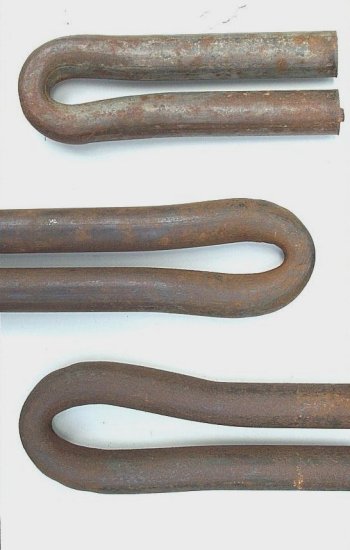 |
Examples of the return bends that were fabricated by bending the tubing when it was red hot, are shown in this picture. It must be remembered that in the days when these systems were being fabricated and installed there was no electricity or hydraulic bending equipment yet available. The tight centre to centre dimension of the pipes made hot forge bending the only option possible. |
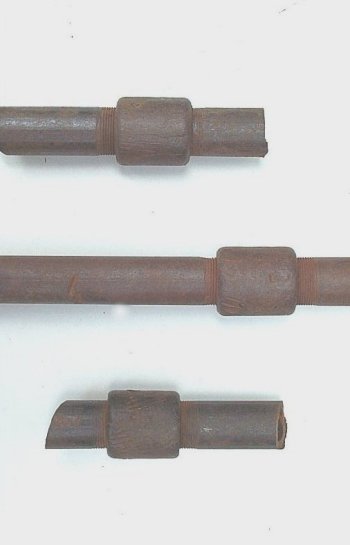 |
Examples of the heavyweight sockets that were needed to join the lengths of hydraulic quality tubing together are shown in this picture. These pipe sockets were the only means used for assembling the many lengths of fabricated pipework of different shapes and sizes. To enable assembly to be made in situ, the sockets were left and right hand threaded and used a patented jointing assembly arrangement whereby the two lengths of tubing were screwed up until they butted together inside the socket which was then able to withstand very high pressures of up to 4000 psi. The ridge marks left by the jaws of the assembly tool used can often be seen gouged into the surface of these sockets. |
The only other type of assembly fitting used in the pipe circuit was a screwed pipe cap which was fitted at positions such as the fill and expansion points.
Again it was necessary for these fittings to be able to withstand the high working pressures. Special long spanners were needed to apply the torque
needed to tighten these pipe caps.
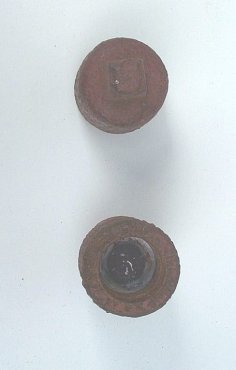 |
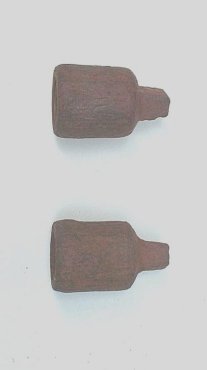 |
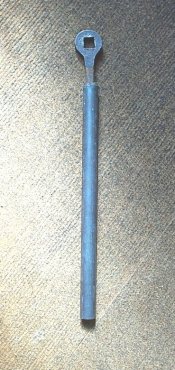 |
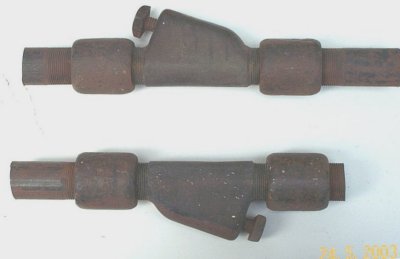 |
One additional item of pipeline equipment has been noted that seems to be particular to the systems found in South Wales. Made from cast brass these items are purpose made air vents. They are either fitted with thumb turn screws as shown in the picture, or with square headed screws for use with a special spanner. One possible reason for these air vents being required is that most of the Chapels and Churches have balconies and the pipework circuits are routed at the two levels. This made flush venting of the system difficult to carry out, so another means of venting was needed to allow the air to escape. Hence the need for air vents. |
Churches & Chapels discovered in Wales which
are still heated with a Perkins HPHW System
All Saint's Church Llanelli
Carmarthenshire.
Bethlehem Chapel Treorchy Glamorgan.
English Congregational Church Ton Pentre Glamorgan.
Saron Welsh Congregational Church Ynyshir Glamorgan.
Bethania Welsh Congregational Chapel Mountain Ash Glamorgan.
